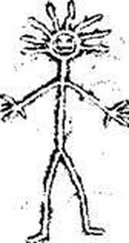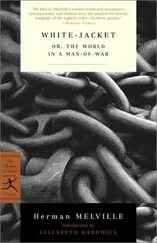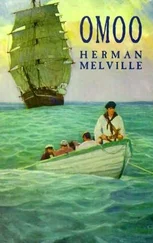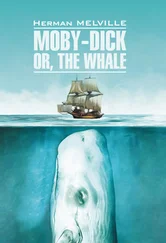Originally from southeast Scotland, John Lorimer had traveled to America with his family at the age of eleven. They had started a farm in an unsettled land whose name Håkan could not retain. Mr. Lorimer had wanted John to become a priest and had him recite entire books of the Bible from memory and prepare biographical sermons delivered to the family each Sunday before dawn. John, however, with his love for all things wild, preferred terrestrial to celestial matters. By a nearby thicket, the boy built a city of sorts (moats, ramparts, streets, stalls) and populated it with beetles, frogs, and lizards. He covered the walled structure every night and inspected it every morning, noting which creatures had vanished or died, which had moved from one compartment to another, which were feared by the rest, and so on. He worked tirelessly on his animal city until his father, suspicious of his long absences, followed him to the thicket, kicked the structure to the ground, stamped its inhabitants flat, and flogged him with a switch made from the branch of a nearby tree. It had been—he remembered the branch clearly and later had learned its name—a yellow birch. While whipping him, his father whispered that he would have to atone for his blasphemous pride—God, and God only, had the power to create a world; any other attempt was an arrogant insult to His work. A few years later, John was sent to university to study theology, but soon botany and zoology (disciplines Håkan at first found perplexing) had displaced divinity. Shortly after that, he traveled to Holland to study under one of Europe’s leading botanists, Carl Ludwig Blume, whose name Håkan would afterwards remember for being amusingly fitting for his profession. Having completed his studies, John returned to America with the intention of classifying species of the West that had never been described or named. In the course of his investigations, Lorimer had come up with a theory for which, he said, his father, now long dead, would not have lashed him with a birch switch but crushed him under an oak beam. Over the course of the following weeks, in broken Swedish, and with the aid of his jarred specimens, new animals they caught along the way, and the ancient creatures they found crystallized in rocks, Lorimer would patiently explain his theory to his mostly silent but quite obviously baffled new friend. His purpose, he said, was to go back in time and reveal the origin of man.
Knowing that Håkan had experience with sage hens, Lorimer suggested that they start there. He asked Håkan to kill one by wringing its neck and then pluck it. Sitting in the narrow shade of the wagon, Lorimer cut into the bird with a small sharp blade and opened it up like a book. He showed Håkan its broken spine and explained why that fracture (as opposed to a broken wing or leg) had killed it. They followed the vertebral column to the brain, and Lorimer told his friend that everything we do, from breathing to walking, from thinking to defecating, is governed by that cord traversing our upper body. Håkan was profoundly moved by this revelation and knew it to be true without requiring further evidence. He could not say why this utterly new notion regarding organs he had never heard named before was correct, but watching the open bird on the ground, he had no doubt. Håkan had never looked at an animal that way. It seemed so clean, simple, and orderly—that he happened to be ignorant of the laws governing that harmonious system was unimportant. He asked Lorimer a great number of questions and ventured a few theories of his own.
Lorimer appreciated his new student’s ardor, and as the weeks passed, that first lesson was followed by many others—conducted mostly in English since neither of them knew the anatomical terms in Swedish. Soon Håkan was dissecting all sorts of animals by himself. In his big, gentle hands, the scalpel delicately skated over the small gem-like organs, and he proved to have an extremely refined intuition concerning their function and their relationship to one another. After a few dozen dissections, he had mastered the rudiments of the mechanics of bones, understood the workings of muscular filaments and springs, had a basic grasp of the architecture of the heart, had mapped the main blood vessels, and was able to identify the ducts and sacks of the digestive tract. His infallible confidence with surgical instruments and the clarity with which he perceived, in one single glance, the internal organization of a body led him to discover (discreetly guided by Lorimer) an astounding fact—all animal life was, in essence, the same. And once and again, Lorimer concluded his demonstrations of this truth by drawing Håkan’s attention to the spine and the brain.
Their small caravan moved on, leaving a trail of slashed birds, dogs, reptiles, and rodents.
During their lessons, Lorimer often reminded his student that his remarkable talent with the scalpel would amount to nothing if the knife was not held by a loving hand guided by a truth-seeking eye. The study of nature is a barren enterprise if stones, plants, and animals become frozen under the magnifying glass, Lorimer said. A naturalist should look at the world with warm affection, if not ardent love. The life the scalpel has ended ought to be honored by a caring, devoted appreciation for that creature’s unrepeatable individuality, and for the fact that, at the same time, strange as this may seem, this life stands for the entire natural kingdom. Examined with attention, the dissected hare illuminates the parts and properties of all other animals and, by extension, their environment. The hare, like a blade of grass or a piece of coal, is not simply a small fraction of the whole but contains the whole within itself. This makes us all one. If anything, because we are all made of the same stuff. Our flesh is the debris of dead stars, and this is also true of the apple and its tree, of each hair on the spider’s legs, and of the rock rusting on planet Mars. Each minuscule being has spokes radiating out to all of creation. Some of the raindrops falling on the potato plants in your farm back in Sweden were once in a tiger’s bladder. From one living thing, the properties of any other may be predicted. Looking at any particle with sufficient care, and following the chain that links all things together, we can arrive at the universe—the correspondences are there, if the eye is skillful enough to detect them. The guts of the anatomized hare faithfully render the picture of the entire world. And because that hare is everything, it is also us. Having understood and experienced this marvelous congruity, man can no longer examine his surroundings merely as a surface scattered with alien objects and creatures related to him only by their usefulness. The carpenter who can only devise tabletops while walking through the forest, the poet who can only remember his own private sorrows while looking at the falling snow, the naturalist who can only attach a label to every leaf and a pin to every insect—all of them are debasing nature by turning it into a storehouse, a symbol, or a fact. Knowing nature, Lorimer would often say, means learning how to be. And to achieve this, we must listen to the constant sermon of things. Our highest task is to make out the words to better partake in the ecstasy of existence.
Håkan had been converted.
The landscape that had seemed so featureless to Håkan was now an expanding enigma he was eager to decipher, but there was little time left after tending to the business of staying alive. When they were not replenishing their supplies of water and firewood, hunting for food, or scouting for potential threats, Lorimer collected and organized his specimens. In the evenings, he would sit around the fire with the men and write in his notebook while they smoked and told stories (and on these occasions he always wore a tenuous, kind grin—whether his smile was brought out by the men’s talk or by his own writing, Håkan could never figure out). In the few spare moments their busy life on the plains afforded them, Lorimer tried to teach his friend how to read, but Håkan found it almost impossible to recognize which letters faced forward and which back, and the characters in the words often seemed to move of their own accord. His practical knowledge, however, grew at an astounding rate, and soon Lorimer deemed him ready to hear the full extent of his theory. This required, Lorimer said, a basic knowledge of anatomy, but also an unprejudiced mind. He believed Håkan to have acquired both.
Читать дальше












